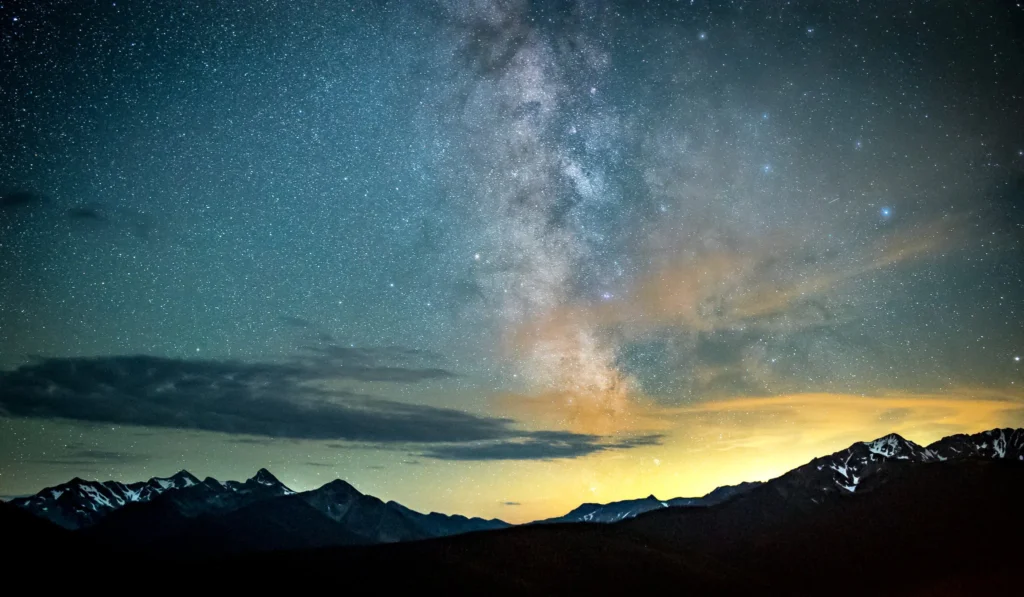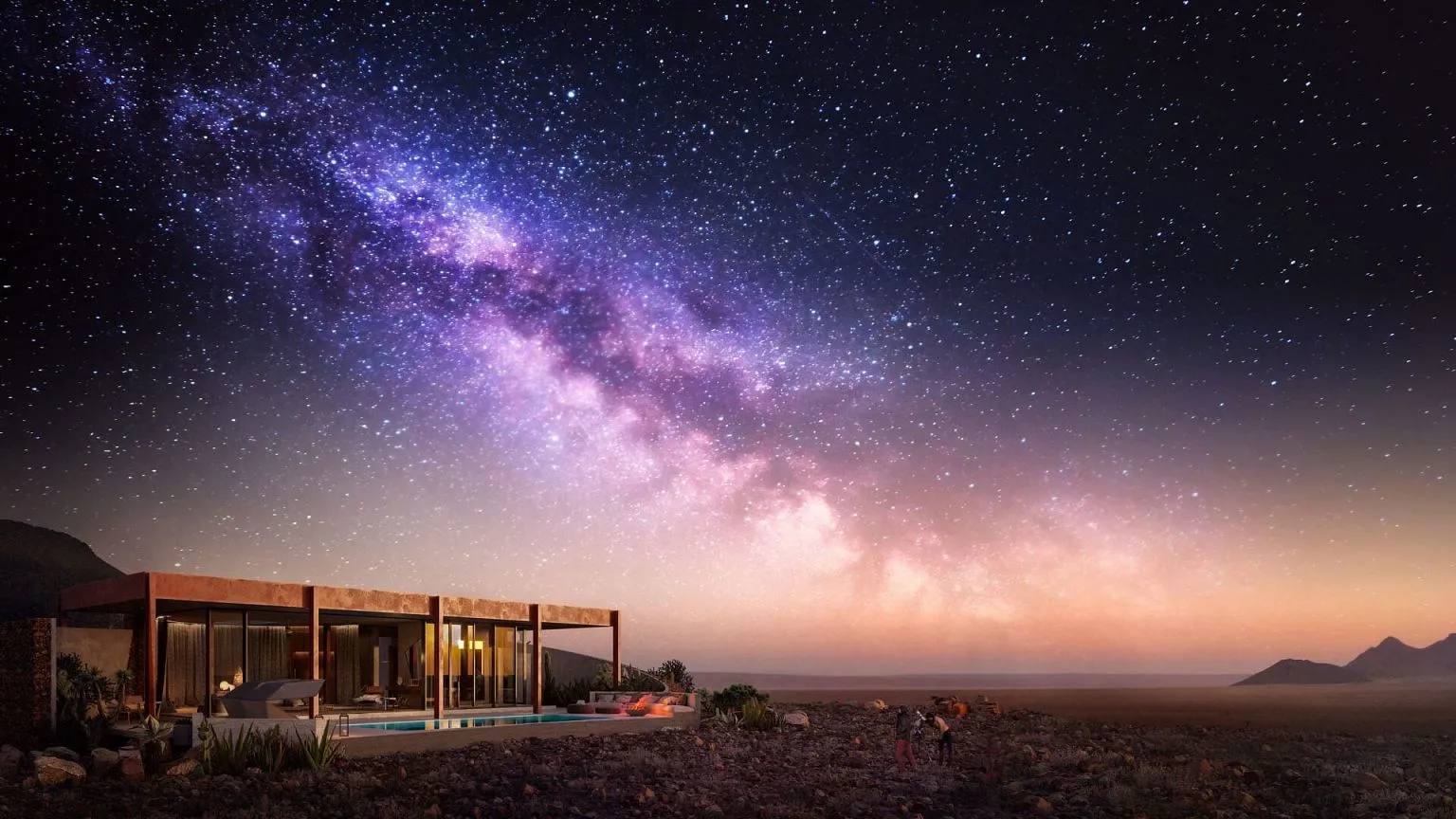As millions seek deeper, more mindful travel experiences, a new trend is rising under the stars—noctourism. Blending the magic of night with the allure of travel, noctourism is the practice of exploring destinations after dark, and its latest frontier is focused squarely on stargazing. Whether it’s lying under a desert sky, hiking by moonlight, or attending a meteor shower festival, travelers are looking to the heavens to reconnect with nature and themselves.
With dark-sky tourism surging post-pandemic and astrotourism events like eclipses and comet sightings drawing global attention, destinations around the world are capitalizing on this booming interest in nighttime adventure and cosmic serenity.
What Is Noctourism?
Noctourism is a growing travel movement that emphasizes night-based experiences, offering alternatives to the crowded and commercialized daytime tours. Unlike traditional tourism, which typically revolves around daylight activities, noctourism focuses on the quiet, mystery, and beauty of the night—often incorporating astronomy, wildlife observation, night photography, or even spiritual experiences under the stars.
At its core, noctourism is about slowing down, tuning in, and experiencing the world through a different lens—where light pollution fades, silence deepens, and the universe comes into view.
Why Stargazing Is at the Heart of Noctourism
In recent years, stargazing has become a central pillar of noctourism, as travelers look to escape city lights and reconnect with the cosmos. The rise in demand for off-the-grid experiences has led to a revival of interest in astronomy, planetary movement, and cosmic events.
Key Drivers Behind the Trend:
- Desire for digital detox: Travelers crave peace, nature, and silence—things the night sky offers in abundance.
- Rise in light pollution awareness: People are realizing how rare true darkness is, making dark-sky zones more precious.
- Bucket-list celestial events: Eclipses, meteor showers, and planetary alignments are now travel-worthy events.
- Wellness and mindfulness: Stargazing supports meditation, mental clarity, and a deeper sense of perspective.
- Photography opportunities: Long-exposure astrophotography and Milky Way selfies are trending across social media.
Top Stargazing Destinations Gaining Traction
From desert plateaus to alpine valleys, these destinations are becoming go-to noctourism hotspots for cosmic explorers:
1. Atacama Desert, Chile
Known for its crystal-clear skies and high elevation, the Atacama offers one of the best stargazing experiences on Earth. Astronomy tours, high-powered telescopes, and even space-themed lodges attract travelers from around the globe.
2. Big Bend National Park, Texas, USA
Certified as an International Dark Sky Park, Big Bend’s remote location and minimal light pollution make it ideal for Milky Way viewing and night photography.
3. Aoraki Mackenzie, New Zealand
Home to the world’s largest Dark Sky Reserve, this area offers guided night walks, stargazing domes, and observatories amidst stunning alpine scenery.
4. NamibRand Nature Reserve, Namibia
Africa’s contribution to noctourism, this reserve offers clear skies, zero pollution, and a rare chance to see constellations from the Southern Hemisphere.
5. Tenerife, Canary Islands
At the Teide Observatory, visitors can observe stars from above the clouds. Teide National Park hosts stargazing hikes and astrophysics tours.

Experiences That Go Beyond the Telescope
Today’s noctourism offerings go far beyond simply lying back and looking up. Many destinations now offer immersive nighttime packages that blend stargazing with culture, wellness, and adventure. These include:
- Full moon yoga sessions
- Guided night safaris and forest walks
- Astrophotography masterclasses
- Planetarium dining experiences
- Night kayaking or bioluminescent bay tours
Many luxury eco-resorts now feature “sky beds” or outdoor suites that allow guests to sleep under the stars without tents or barriers—offering an unforgettable celestial experience.
How Social Media Fuels the Movement
Travel influencers, night photographers, and adventure bloggers are playing a huge role in popularizing noctourism. Dark-sky destination reels, meteor shower countdowns, and Milky Way time-lapses abound on platforms such as Instagram and TikTok. Hashtags like #Noctourism, #StargazingTrip, and #DarkSkyTravel are growing rapidly.
The trend is appealing to Millennials and Gen Z travelers who value unique, shareable experiences over material souvenirs—especially when tied to nature, wellness, or environmental awareness.
Sustainability and Dark Sky Preservation
With popularity comes responsibility. Increased footfall in dark-sky areas poses risks of light pollution, environmental degradation, and overcrowding. That’s why many noctourism operators are now working alongside organizations like the International Dark-Sky Association (IDA) to promote responsible travel practices.
Sustainable noctourism encourages:
- Use of red-light flashlights to preserve night vision
- Quiet hours and minimal disruption to wildlife
- No artificial light installations in stargazing zones
- Education on constellations, navigation, and space awareness
Frequently Asked Questions (FAQs)
1. What is noctourism?
Noctourism refers to night-focused travel experiences such as stargazing, moonlit hikes, nocturnal wildlife tours, and cultural or spiritual activities held after dark.
2. Why is stargazing becoming popular among travelers?
People are seeking quieter, more meaningful connections with nature. Stargazing offers peace, wonder, and a sense of cosmic perspective that contrasts with the stress of daily life.
3. Do I need special equipment for stargazing trips?
Not always. Many destinations provide telescopes or guided tours. However, a good pair of binoculars, a star map app, or a DSLR camera can enhance the experience.
4. What’s the best time of year for noctourism?
Late summer to early autumn is ideal in many regions due to clear skies and mild temperatures. Specific celestial events—like eclipses, meteor showers, and new moons—also drive tourism.
5. Are stargazing destinations accessible to families and beginners?
Yes. Many offer beginner-friendly tours and kid-friendly stargazing programs. National parks often have ranger-led night walks with storytelling and constellation spotting.
6. Can I find luxury experiences in noctourism?
Absolutely. From sky bed resorts in Africa to stargazing lounges in New Zealand, there are high-end, curated experiences that blend cosmic wonder with comfort and service.
7. Is noctourism safe?
When done through licensed tour providers and in secure areas, noctourism is very safe. Always follow local guidelines, stay with groups, and bring essentials like water, warm clothes, and a red flashlight.
Conclusion
Noctourism is more than a travel trend—it’s a movement that invites us to slow down, look up, and rediscover the magic of the night sky. As stargazing destinations continue to gain global attention, travelers are embracing this blend of nature, wonder, and mindfulness.
Whether you’re a seasoned astronomer or a casual traveler looking for a magical night, the stars are quite literally aligning for your next unforgettable journey.




